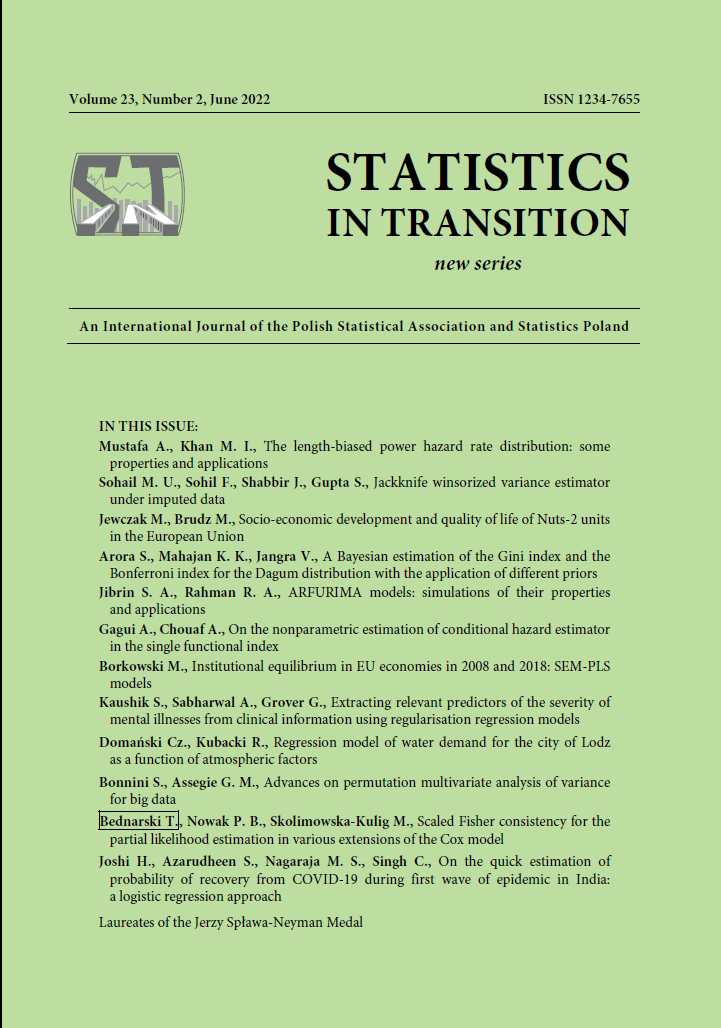ARTICLE
ABSTRACT
The Cox proportional hazards model has become the most widely used procedure in survival analysis. The theoretical basis of the original model has been developed in various extensions. In the recent years, vital research has been undertaken involving the incorporation of random effects to survival models. In this setting, the random effect is a variable (frailty) which embraces a variation among individuals or groups of individuals which cannot be explained by observable covariates. The right choice of the frailty distribution is essential for an accurate description of the dependence structure present in the data. In this paper, we aim to investigate the accuracy of inference based on the primer Cox model in the existence of unobserved heterogeneity, that is, when the data generating mechanism is more complex than presumed and described by the kind of an extension of the Cox model with undefined frailty. We show that the conventional partial likelihood estimator under the considered extension is Fisher-consistent up to a scaling factor, provided symmetry-type distributional assumptions on covariates. We also present the results of simulation experiments that reveal an exemplary behaviour of the estimators.
KEYWORDS
frailty models, Cox model, Fisher consistency
REFERENCES
Aalen, O. O., Borgan, O., Gjessing, H. K., (2008). Survival and Event History Analysis. A Process Point of View, Springer.
Bednarski, T., (1993). Robust estimation in Cox regression model. Scandinavian Journal of Statistics, 20, pp. 213–225.
Bednarski, T., Nowak, P. B., (2021). Scaled Fisher consistency of the partial likelihood estimator in the Cox model with arbitrary frailty. Probability and Mathematical Statistics, 41(1), pp. 77–87.
Bednarski, T., Skolimowska-Kulig, M., (2018). Scaled consistent estimation of regression parameters in frailty models. Acta Universitatis Lodziensis Folia Oeconomica, 5(338), pp. 133–142.
Bednarski, T., Skolimowska-Kulig, M., (2019). On scale Fisher consistency of maximum likelihood estimator for the exponential regression model under arbitrary frailty. Statistics and Probability Letters, 150, pp. 9–12.
Cox, D. R., (1972). Regression models and life-tables (with discussion). Journal of the Royal Statistical Society B, 34, pp. 187–220.
Duchateau, L., Janssen, P., (2008). The Frailty Model, Springer-Verlag.
Henderson, R., Oman, P., (1999). Effect of frailty on marginal regression estimates in survival analysis. Journal of the Royal Statistical Society B, 61, pp. 367–379.
Hougaard, P., (2000). Analysis of Multivariate Survival Data, Springer Verlag.
Huffer, F. W., Park, C., (2007). A test for elliptical symmetry. Journal of Multivariate Analysis 98 (2), 256–281.
Kalbfleisch, J. D., Prentice, R. L., (2002). The Statistical Analysis of Failure Time Data, Hoboken, N.J.: Wiley.
Klein, J. P., Moeschberger, M. L., (2003). Survival Analysis. Techniques for Censored and Truncated Data, New York: Springer-Verlag.
Manzotti, A., P´erez, F. J., Quiroz, A. J., (2002). A Statistic for Testing the Null Hypothesis of Elliptical Symmetry. Journal of Multivariate Analysis, 81 (2), 274–285.
Ruud, P., (1983). Sufficient conditions for the consistency of maximum likelihood estimation despite misspecification of distribution in multinomial discrete choice models. Econometrica, 51(1), pp. 225–228.
Schott, J. R., (2002). Testing for elliptical symmetry in covariance-matrix-based analyses. Statistics & Probability Letters, 60 (4), pp. 395–404.
Stoker, T., (1986). Consistent estimation of scaled coefficients. Econometrica, 54(6), pp. 1461–1481.
Therneau, T. M., Grambsch, P. M., (2000). Modeling Survival Data: Extending the Cox Model, New York: Springer-Verlag.
Vaupel, J. W., Manton, K. G., Stallard, E., (1979). The impact of heterogeneity in individual frailty on the dynamics of mortality. Demography, 16, pp. 439–454.
Wienke, A., (2010). Frailty Models in Survival Analysis, Chapman & Hall/CRC.
